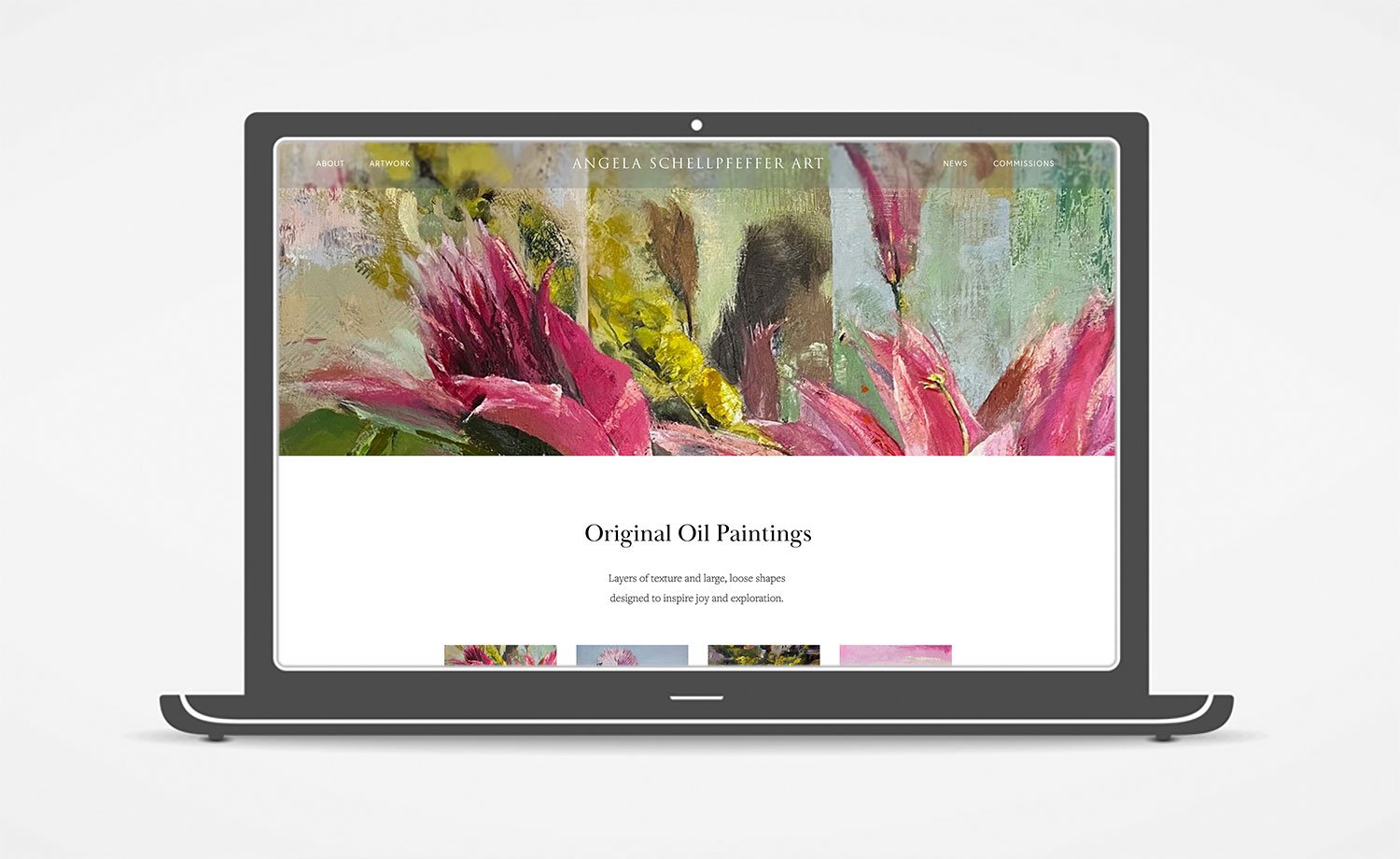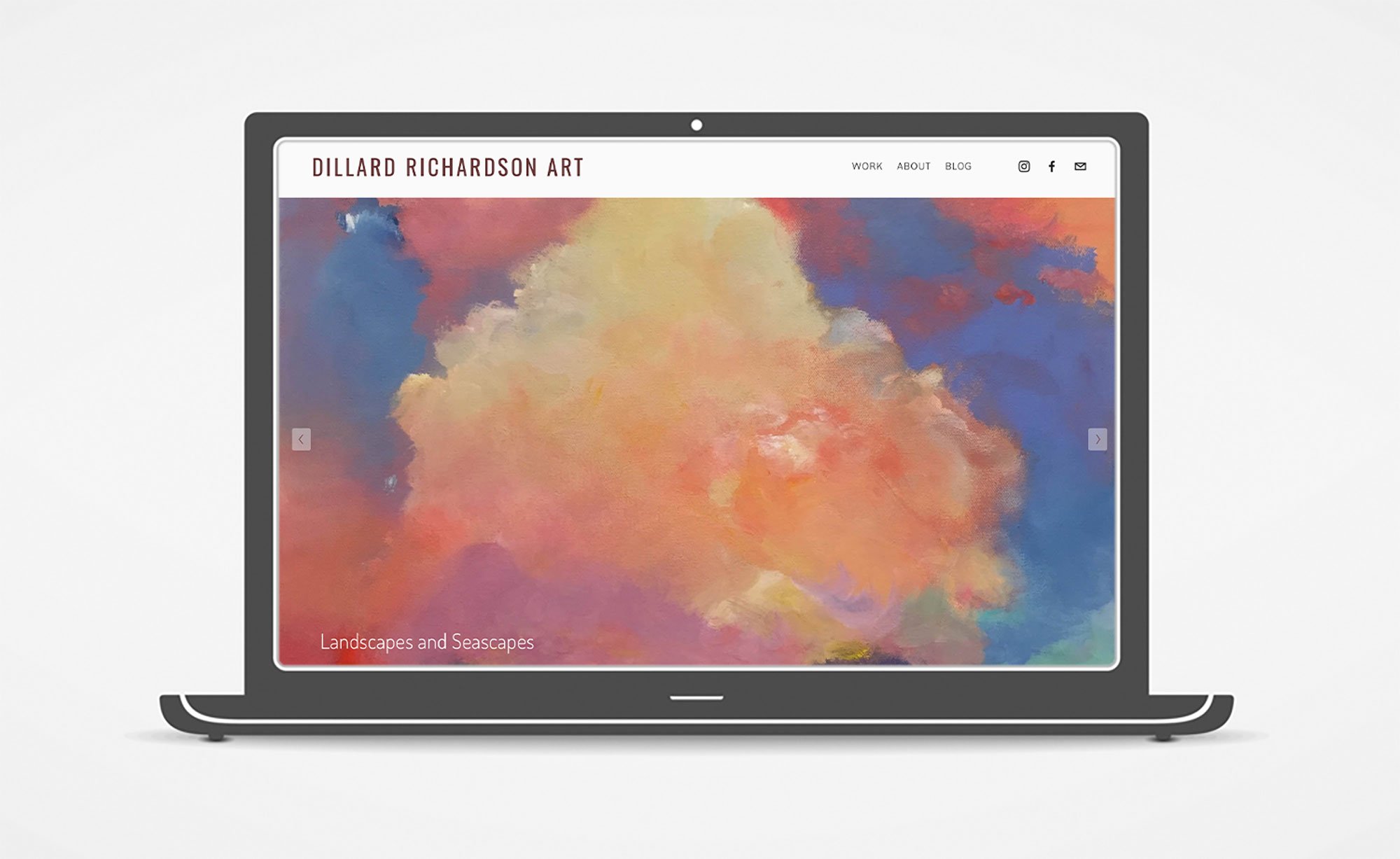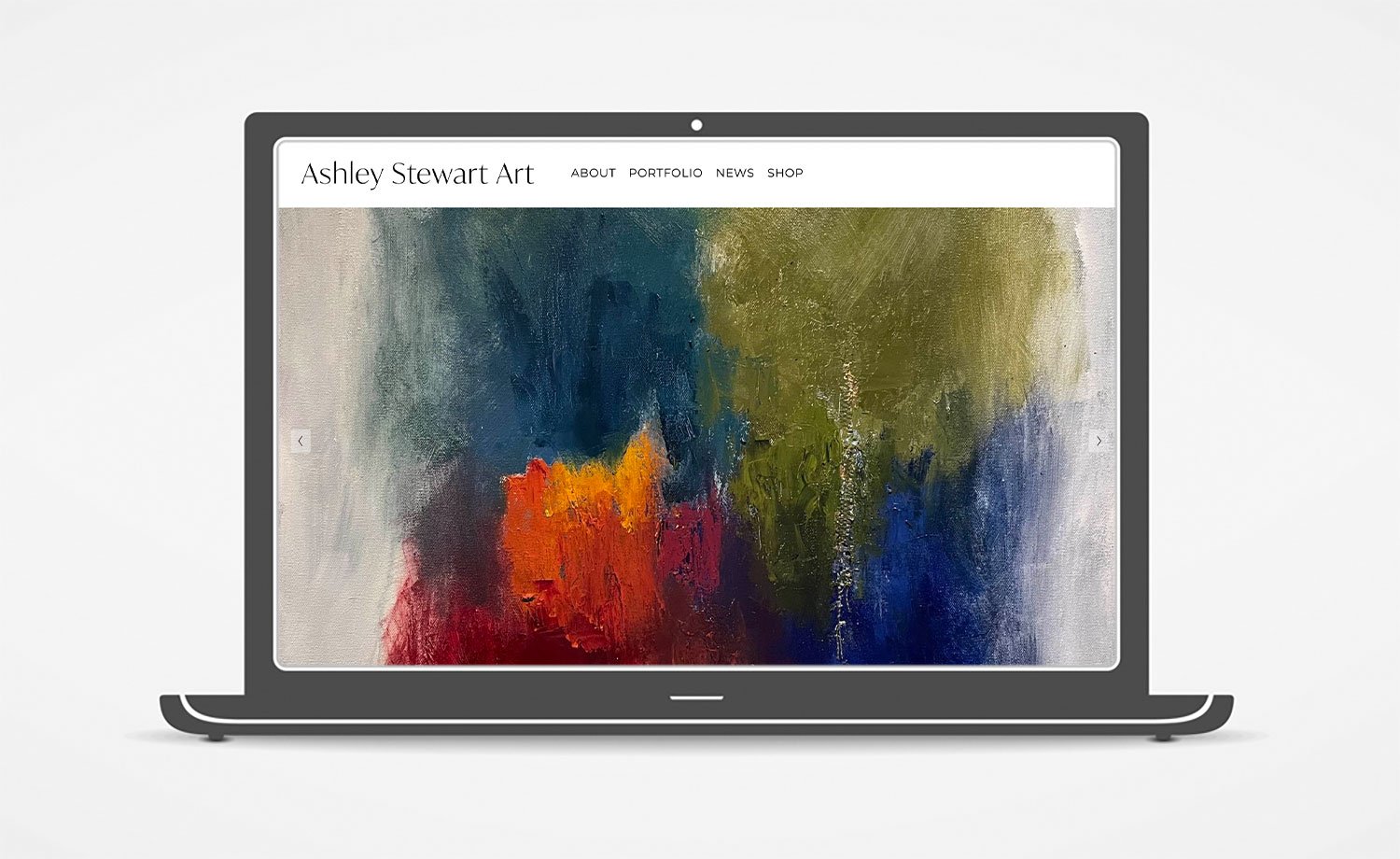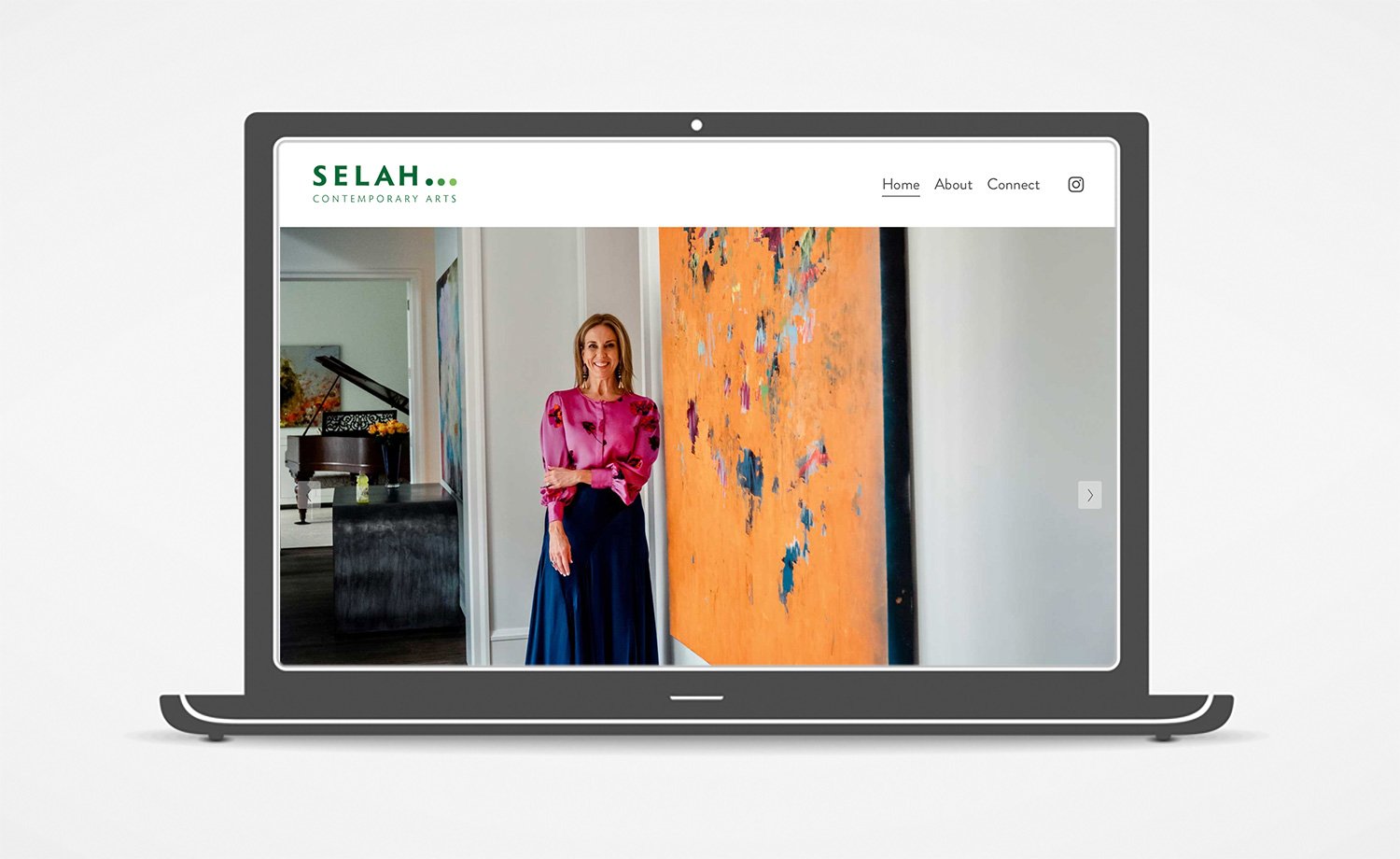Creating a Website for an Artist: 2025 Best Practices
As both a website designer and practicing artist, I understand the unique challenges creative professionals face when establishing their online presence. A thoughtfully crafted website for an artist has become an essential tool sharing your work with the world.
Why Every Artist Needs Their Own Website
While social media platforms offer valuable exposure, your personal website provides complete creative control and serves as your permanent digital gallery—a professional space where collectors, galleries, and art enthusiasts can discover your work on your terms.
Finding Balance: Creating Art vs. Creating a Website
For artists, creative entrepreneurs, and other small businesses, websites can be a challenge. You're passionate about creating art—not spending hours learning website platforms or digital marketing trends. This is where working with a professional designer who understands the art world makes all the difference.
By partnering with someone who specializes in artist websites, you can focus on your creative practice while your online presence is expertly managed, ensuring your website truly reflects your artistic style and personal brand without technical frustrations. A good designer helps you organize and share your work in a way that will resonate with collectors and galleries, handling the technical aspects so you can concentrate on what you do best: making art.
Essential Elements of an Artist Website
Portfolio Page: Showcase Your Work
Present your artwork professionally with:
High-quality images that maintain color accuracy and detail
Thoughtful organization by series, medium, subject (abstract, landscape, floral, etc.) or chronology
Focus on your best work — Consider editing out old work that doesn't reflect your current quality or style
About Page: Share Your Story
Let visitors get to know you, what you're passionate about, and why you make the work you do. The About page should include:
A well-written, third-person artist bio that describes your work clearly, hits the highlights of your artistic journey, education, representation, and a little about your personal life
List of galleries or other places people can find your work
List notable exhibitions, collectors, and press features
A current professional photo of you, either a headshot or shot of you in the studio
Contact info and links to social media
Contact Info: Make It Easy to Get in Touch
A dedicated Contact page is optional if you include your contact information in multiple places on your website, including footer and About page
Include clear call-to-action and process for inquiries
Build your email list with a newsletter subscription form integrated with your email marketing platform
Integrate your social media accounts and place links in several places
Shop Page or Gallery Listing: Make It Easy to Buy Your Art
If you want to sell available artwork or prints directly on your website, make sure your shop is easy to find and navigate and uses secure e-commerce functionality.
List galleries and retailers that represent your work, with links and locations
Explain commission request process
Clearly communicate policies regarding shipping, returns, and framing options
Current Trends for Artist Websites in 2025
Homepages That Tell Your Story
Your art should be front and center, but collectors are often more interested in the artist than their product. Some artist websites open with brand story or personal narratives that creates an emotional connection and deeper appreciation of the art.
Show Your Process
Collectors are increasingly interested in seeing behind-the-scenes of your creative practice. These insights help collectors feel a deeper connection to both the art and artist, adding value to their purchase beyond the physical piece.
Use studio photos, time-lapse videos of works in progress
Use a blog page for storytelling about a collection or your process
Enhance product listings with descriptions of materials and techniques used, the inspiration behind work, and extra images or video that to show detail and process.
Use Sales Pages to Release a Collection
Strategic collection launches are becoming a powerful marketing tool for artists. Create a dedicated Sales Page or Landing page that gathers that work together in one page of your website. Branding and releasing a cohesive body of work as a collection allows you to:
Create a sense of urgency and excitement around new work
Provide a focused marketing opportunity across social media and email
Give collectors a compelling reason to visit your website at a specific time
Tell the story of the collection with copy and images
The Value of Professional Guidance
Creating a website for an artist involves many creative and strategic decisions. Working with a designer who understands both the art world and digital best practices means your website will be professionally crafted while you maintain your creative focus. Letting them handle the technical aspects will save you countless hours of frustration and allowing your online presence to evolve with industry standards.
Your website is a powerful extension of your artistic practice—a digital ambassador that never sleeps. With the right approach, it can be an invaluable asset that supports your creative career without demanding your constant attention. If you want to DIY, i highly recommend Squarespace for artist websites, but know that help is available if you need to create space to focus on what truly matters: creating the work.
Ready to get started?
Contact me via email and we’ll get a consultation scheduled. Once I understand your unique needs and preferences, I’ll estimate your project, and we’ll get moving toward launching your new site!










